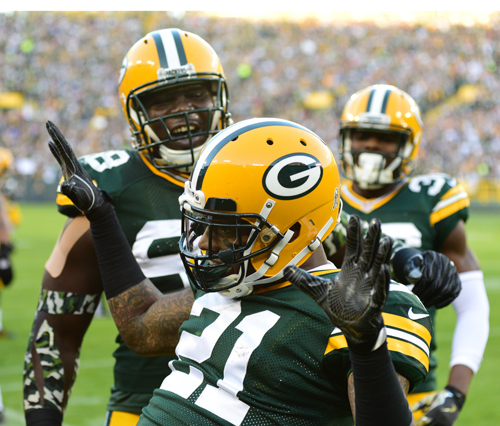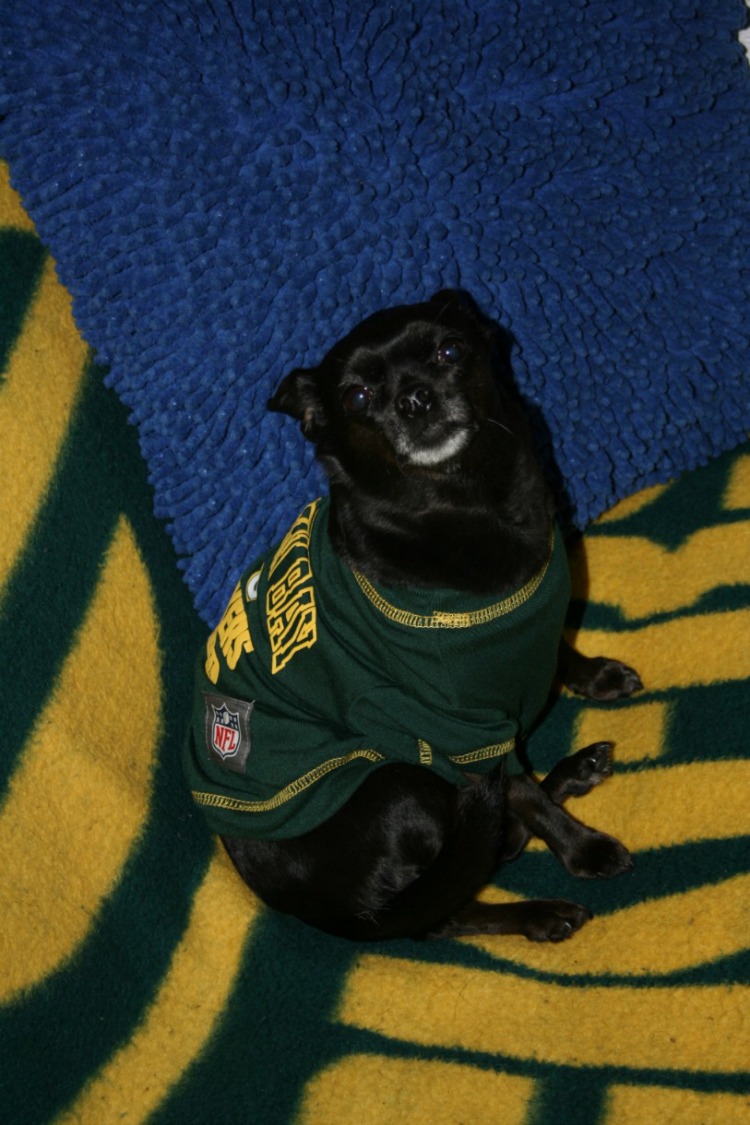Shifting the playing field


Green Bay’s Ha Ha Clinton-Dix was in little danger of an excessive/unsportsmanlike celebration penalty when he celebrated his second interception of the Colts game with Letroy Guion, since it was on the Packers’ sideline. Had he gloated in quarterback Andrew Luck’s face, it could have been called.
Rules a’changing for the NFL in 2017
Kelly O’Day
Editor, Packerland Titletown USA
Every year the NFL owners meet to discuss the state of the league and high on the list for 2017 was the impending change of location for the Oakland Raiders to Las Vegas, as well as confirming they were fine with two teams being located in Los Angeles.
The owners actually closed business a day early in Phoenix in late March after deciding all three of those moves were hunky-dory. But before they left Phoenix, they also weighed in on several potential rules changes.
Some of them passed, while others have been temporarily shelved pending further consideration this off-season.
The new changes include:
• Cracking down on “very egregious” hits
Explanation: While referees were already allowed to eject players over hits that are extremely violent, especially involving defenseless players, new discussion from the league served to make them a point of emphasis. The league has been on a player-safety angle since the concussion lawsuits raised their ugly heads, and chairman of the Competition committee Rich McKay was quoted as saying he wants those violent hits “out of our game.” To the point of potentially banning a player from the next game if he isn’t pulled from the current one.
The league feels it is truly only talking about a half-dozen or so plays a year, but a point of emphasis can quickly be over-executed.
• Replay review oversight in New York
Explanation: Vice president of officiating Dean Blandino and his crew will handle the instant replay decisions in concert with the head referee at the affected game, who will use a wireless headset and tablet, not the large box and hood of the past. The league hopes to more standardize their decisions, as well as speed up the process. The competition committee predicts a cut of a minute-and-a-half due to increased efficiency.
The command center has been in existence since 2014, but until now it acted in an advisory capacity, leaving nearly all of the authority in the referee’s hands.
• No more leaping the line
Explanation: While it wasn’t a super-successful strategy in 2016, three times teams did manage to leap the center and block a field goal or PAT kick. While it was fun to watch, teams figured out the best strategy to beat it was to catch the leaper legs as they passed and flip him on his head. So this was as much a safety measure as anything.
Top kicker Justin Tucker will be pleased. He would have had a perfect conversion rate on field goals if not for the one blocked by the Patriots’ Shea McClellin in Week 14. He ended up 38-for-39, the fifth-best rate in NFL history at 97.4 percent, and had made 35 in a row when McClellin, a former under-whelming Bears first-round pick, easily smothered this one.
• Intentional fouls deemed unsportsmanlike conduct
Explanation: The new rule makes it 15 yards for multiple fouls and the clock is reset. In the past, if the same penalty was committed by several players at the same time, one was enforced and time burned off the clock.
A play that factored heavily into the new rule came on the defensive side of the ball. Late in the game, the 49ers held every Saints receiver on a play, figuring the five yards holding was worth the time used up while New Orleans quarterback Drew Brees tried in vain to find an open receiver. The 49ers used a unique, effective strategy, but it’s out now. Now they would give up 15 yards and gain no time.
• Crackbacks by the backs are cracked
Crackback blocks by a backfield player who is in motion, even if within two yards outside the tackle when the ball is snapped, are now prohibited. A crackback block happens when a player angles sharply back to block a defensive player. Crackback hits below the waist were previously illegal.

Mike Daniels was closer to the call after a run stop on a short-yardage play, but he also turned to the crowd, not the stuffed runner.
On the cusp
A couple of other rule changes that weren’t approved, but still may be before play starts, include:
• Cutting overtime to 10 minutes
Explanation: Teams that play far into overtime may not be as well-rested for the next contest as their opponents, especially if a Thursday night game is on the docket.
Last year, six games went past the 10-minute mark of overtime, the second-highest total to 2002’s seven. This rule would address that disparity, at least somewhat.
Of course, one solution would be to eliminate Thursday night games altogether, but all of a sudden the league grows quiet. Or the sounds of the cash registers drowns it out.

Randall Cobb’s celebration with Davante Adams after a touchdown against the Texans was about as classy and sportsmanlike as it gets in the NFL.
• New latitude in celebrations
Possibly attempting to counter cries of “No Fun League,” the league said it would encourage referees to be more lenient with penalties for excessive or unsportsmanlike celebration after big plays.
The next step was to distribute a video to players to point out celebrations that fell on either side of the limit the league likes. Since there was some immediate negative feedback from players – including new Packers’ pick-up tight end Martellus Bennett – Commissioner Roger Goodell pulled the video and has said he would like to meet with a select group of players to plan the strategy of a league-wide conversation.
Last year, referees flagged players 30 times for excessive or unsportsmanlike celebration, a large uptick from the three in the 2012 season.
One last question?
So with those Raiders going to Vegas, will the league be opening up on its abhorrence of NFL gambling?
According to Roger Goodell, per MMQB’s Peter King, “We are not changing our position as it relates to legalized sports gambling. We still don’t think it is a positive thing.”




